AWS News Blog
AWS Migration Hub – Plan & Track Enterprise Application Migration
About once a week, I speak to current and potential AWS customers in our Seattle Executive Briefing Center. While I generally focus on our innovation process, we sometimes discuss other topics, including application migration. When enterprises decide to migrate their application portfolios they want to do it in a structured, orderly fashion. These portfolios typically consist of hundreds of complex Windows and Linux applications, relational databases, and more. Customers find themselves eager yet uncertain as to how to proceed. After spending time working with these customers, we have learned that their challenges generally fall in to three major categories:
Discovery – They want to make sure that they have a deep and complete understanding of all of the moving parts that power each application.
Server & Database Migration – They need to transfer on-premises workloads and database tables to the cloud.
Tracking / Management – With large application portfolios and multiple migrations happening in parallel, they need to track and manage progress in an application-centric fashion.
Over the last couple of years we have launched a set of tools that address the first two challenges. The AWS Application Discovery Service automates the process of discovering and collecting system information, the AWS Server Migration Service takes care of moving workloads to the cloud, and the AWS Database Migration Service moves relational databases, NoSQL databases, and data warehouses with minimal downtime. Partners like Racemi and CloudEndure also offer migration tools of their own.
New AWS Migration Hub
Today we are bringing this collection of AWS and partner migration tools together in the AWS Migration Hub. The hub provides access to the tools that I mentioned above, guides you through the migration process, and tracks the status of each migration, all in accord with the methodology and tenets described in our Migration Acceleration Program (MAP).
Here’s the main screen. It outlines the migration process (discovery, migration, and tracking):
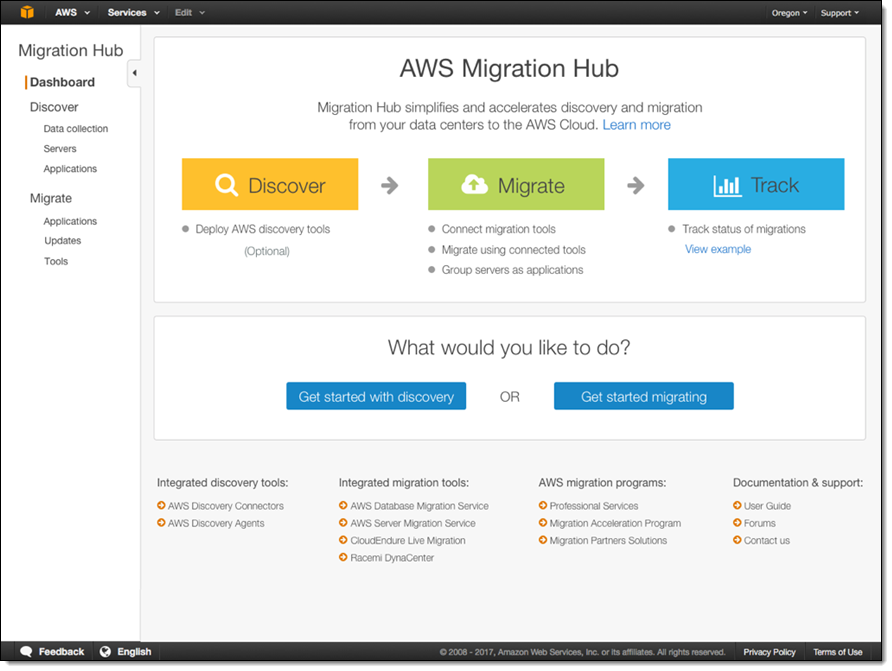
Clicking on Start discovery reveals the flow of the migration process:
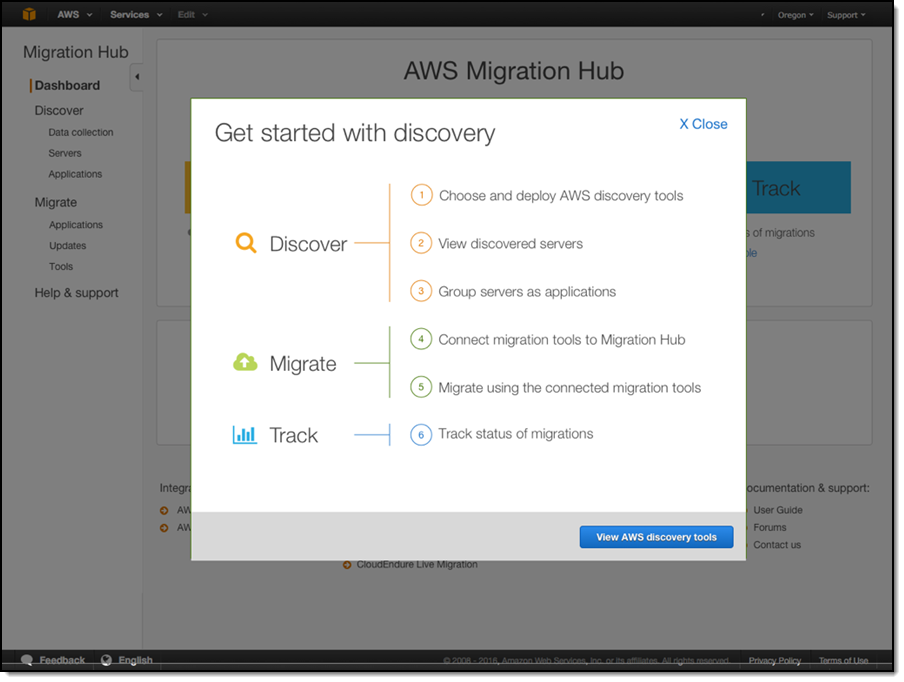
It is also possible to skip the Discovery step and begin the migration immediately:

The Servers list is populated using data from an AWS migration service (Server Migration Service or Database Migration Service), partner tools, or using data collected by the AWS Application Discovery Service:
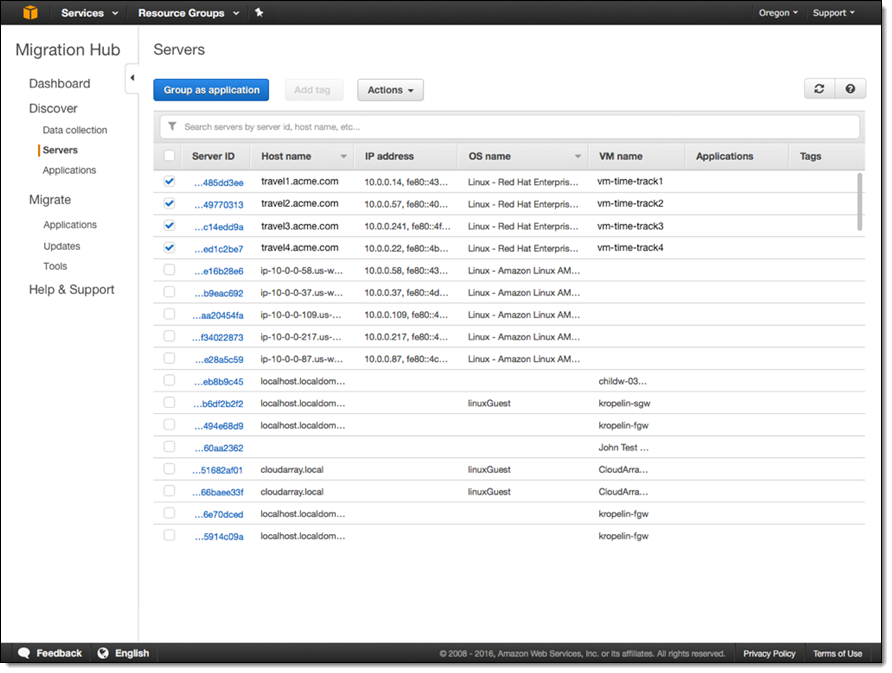 I can on Group as application to create my first application:
I can on Group as application to create my first application:
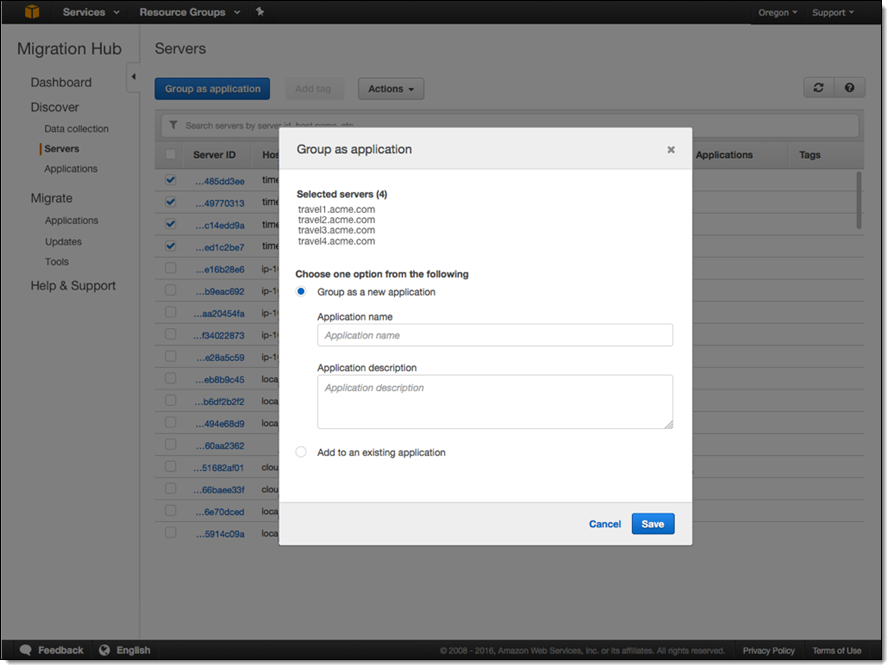
Once I identify some applications to migrate, I can track them in the Migrations section of the Hub:
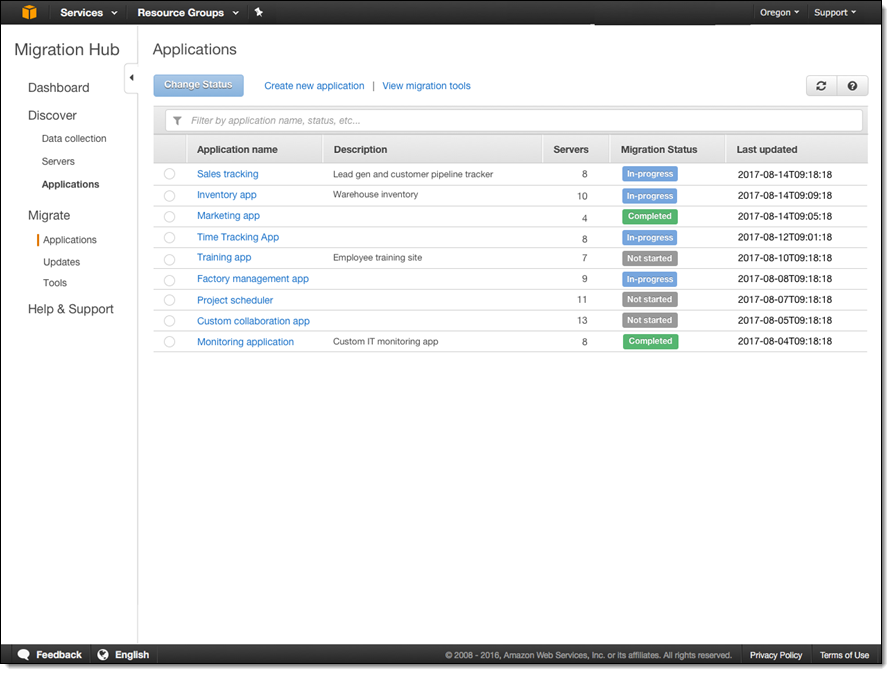
The migration tools, if authorized, automatically send status updates and results back to Migration Hub, for display on the migration status page for the application. Here you can see that Racemi DynaCenter and CloudEndure Migration have played their parts in the migration:
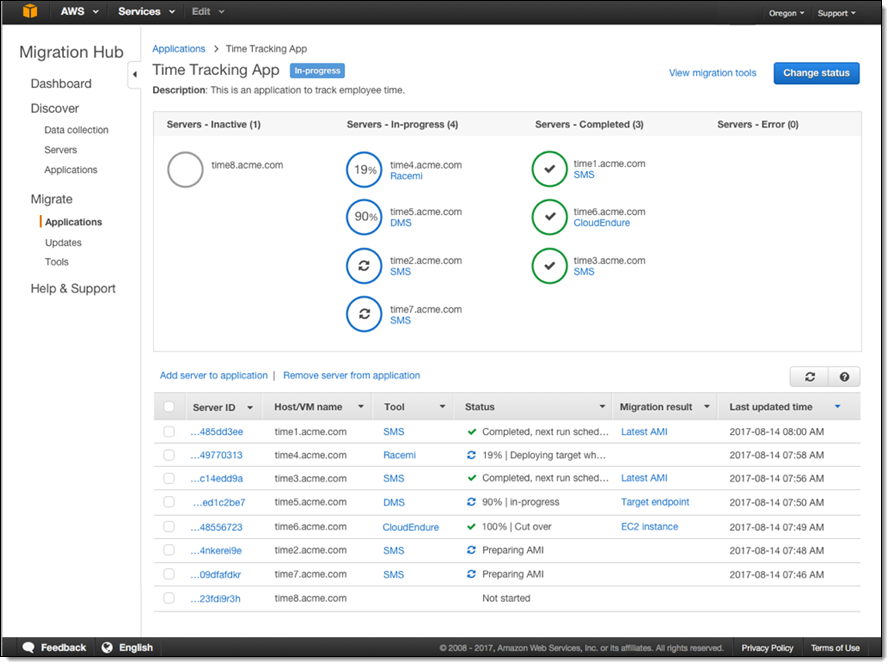
I can track the status of my migrations by checking the Migration Hub Dashboard:
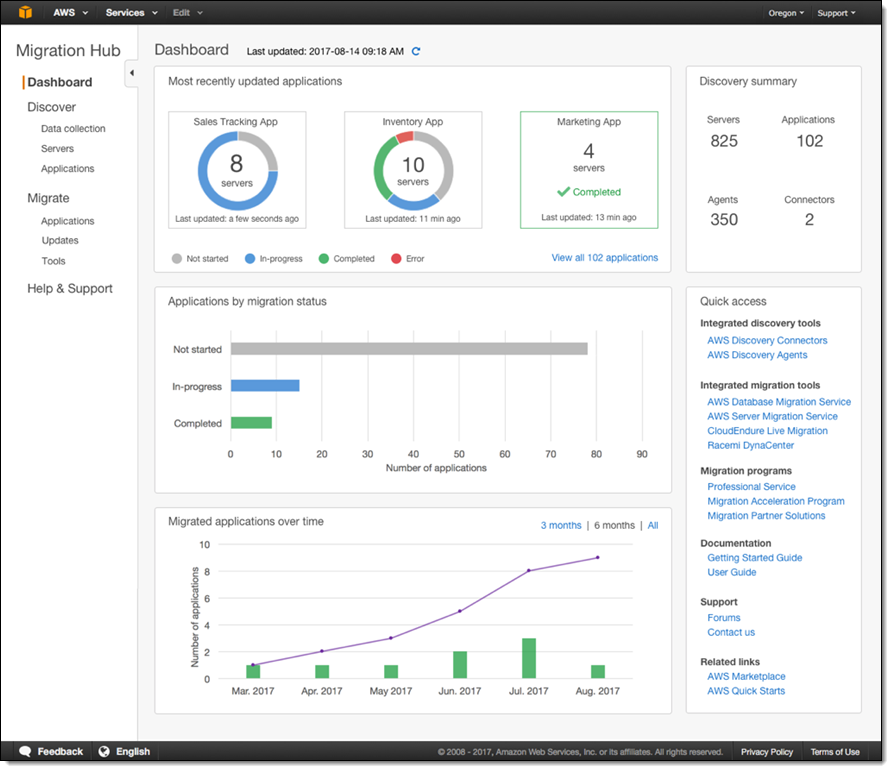
Migration Hub works with migration tools from AWS and our Migration Partners; see the list of integrated partner tools to learn more:
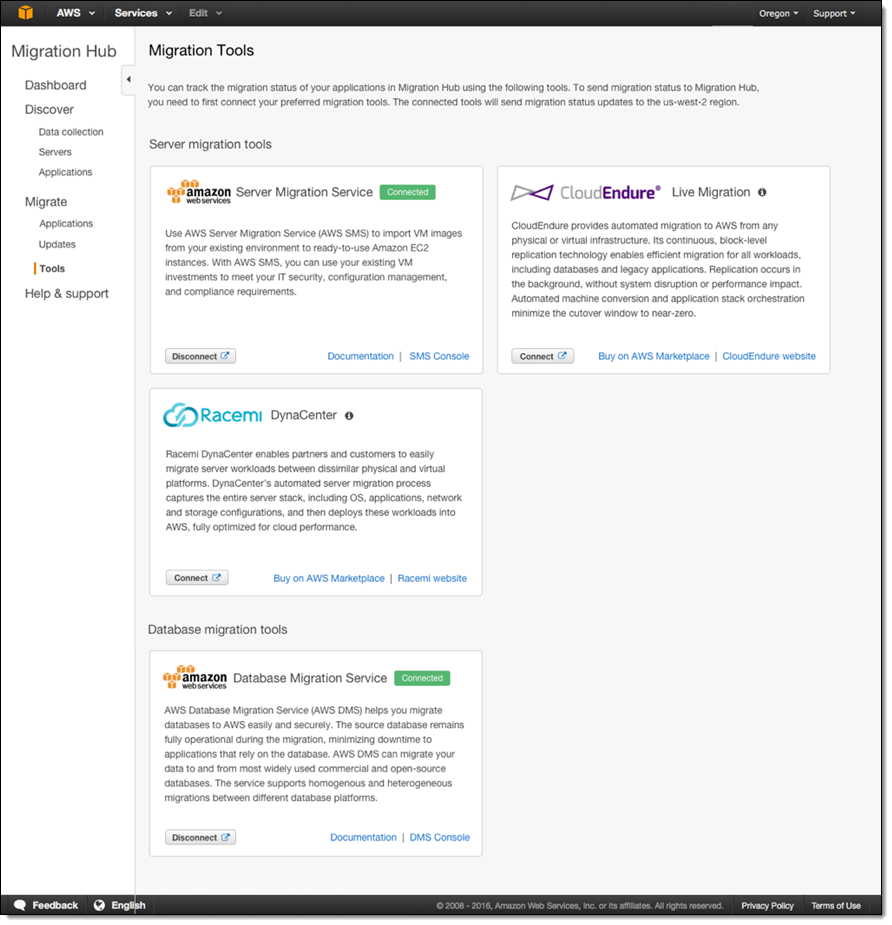 Available Now
Available Now
AWS Migration Hub can manage migrations in any AWS Region that has the necessary migration tools available; the hub itself runs in the US West (Oregon) Region. There is no charge for the Hub; you pay only for the AWS services that you consume in the course of the migration.
If you are ready to begin your migration to the cloud and are in need of some assistance, please take advantage of the services offered by our Migration Acceleration Partners. These organizations have earned their migration competency by repeatedly demonstrating their ability to deliver large-scale migration.
— Jeff;